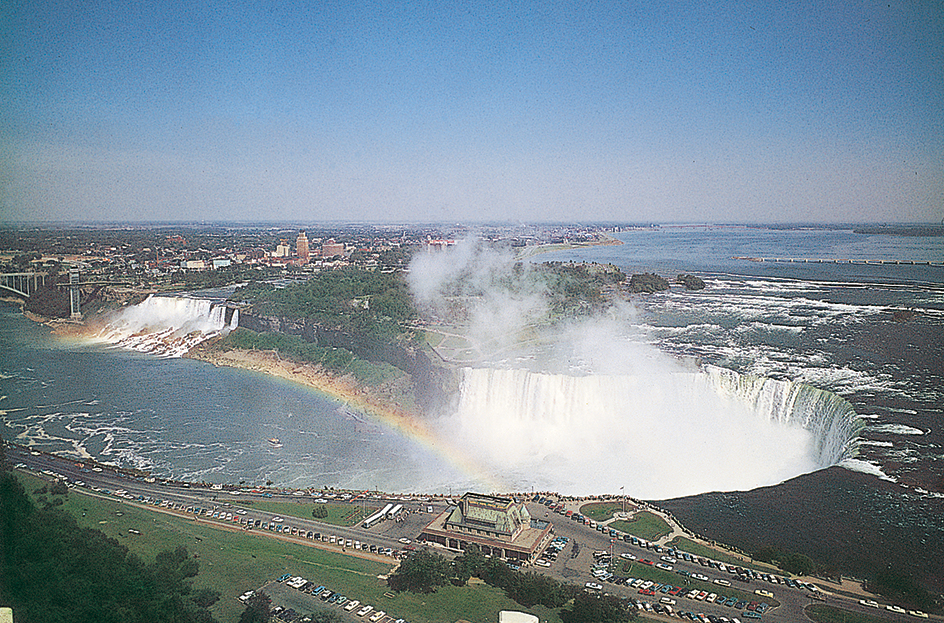Niagara River is a short river that connects Lake Erie and Lake Ontario. The river forms part of the border between the state of New York and the Canadian province of Ontario. Water from all the Great Lakes except Lake Ontario drains into the Niagara River. Most of this water drops over Niagara Falls, which is about halfway along the Niagara River’s course.

The Niagara River is 35 miles (56 kilometers) long. It drops 326 feet (99 meters) during its course, an unusually sharp descent for so short a river. The dramatic drop in elevation creates a swift current and some of the roughest rapids in the world. Hydroelectric power plants along the river produce much electricity.
Description.
The Niagara River starts at Lake Erie as a quiet stream about 600 yards (550 meters) wide. The river flows north, broadens, and then divides as it passes both sides of Grand Island. Beyond the island, the river becomes about 2 miles (3 kilometers) wide. It then turns sharply west and narrows before plunging over Niagara Falls.
Beyond the falls, the Niagara River turns north again and flows swiftly through a narrow gorge about 7 miles (11 kilometers) long. The Whirlpool Rapids begin in the gorge about 3 miles (5 kilometers) below the falls. The water in the rapids twists violently and circles at a speed of about 27 miles (43 kilometers) per hour. The river forms another series of rapids below the Whirlpool Rapids and then flows quietly on before emptying into Lake Ontario.
Water power.
Several hydroelectric power plants stand on both sides of the Niagara River below Niagara Falls. The major power plants are the Robert Moses power plant on the American side of the river and the two Sir Adam Beck power plants on the Canadian side. The Robert Moses power plant and a nearby pumping-generating station together have a capacity of about 2,400,000 kilowatts. The Robert Moses plant is the largest hydroelectric plant in the Eastern United States and one of the largest hydroelectric plants in the world. The two Sir Adam Beck plants and a small pumping-generating station have a combined capacity of more than 1,800,000 kilowatts.
Water for the Robert Moses and Sir Adam Beck power plants is taken from the Niagara River before the river reaches Niagara Falls. The water plunges down tunnels dug along the American and Canadian sides of the river. The tunnels carry the water into canals. The water then flows into the power plants. Each of the power projects has a large reservoir. When the demand for electricity is low, water from the tunnels is pumped into the reservoirs. When the demand increases, the reservoir water is used by the pumping-generating stations to produce additional electricity.
Loading the player...Waterfall crashing
Commerce and industry.
Ships cannot sail the full length of the Niagara River because of the falls and rapids. However, the nearby Welland Ship Canal, built by the Canadian government, provides a route for ships traveling between lakes Erie and Ontario (see Welland Ship Canal ).
The hydroelectric power plants along the Niagara River have attracted to the region many industries that use large amounts of electricity. Most of the industries are centered in Niagara Falls, Ont., and in the area between Niagara Falls, N.Y., and Buffalo, N.Y. During the 1970’s, many people in the area became concerned about water pollution caused by some of the industries.
See also Niagara Falls .
